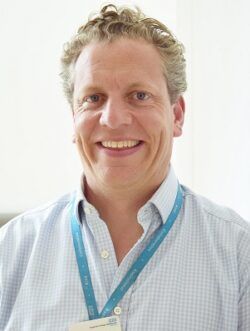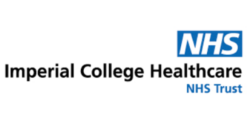Building a hospital with continuity, curiosity and respect
Want to spend a long time training for a job? Become a doctor - or an architect. I became a doctor, yet my job recently has involved quite a lot to do with buildings, and talking about buildings. So, what's that got to do with the day job?
At Imperial we’re working hard to redevelop our hospitals, starting with St Mary’s in Paddington. St Mary’s was founded in 1845, the year before anaesthesia was first demonstrated in the UK, so it’s fair to say the world has moved on quite significantly since then, and our buildings have become increasingly outdated. As director of strategy, research and innovation, this process of ensuring our buildings support the care we deliver today, as well as in the future, is one I’m heavily involved in.
It’s tempting to start a redevelopment programme with some glitzy drawings, or a model of what a new high-tech building could look like, or to confine our conversations to a group of senior executives. We haven’t done that; we started by listening to the patients, staff, and members of our community who use our buildings, or who might do in the future. It’s an engagement process we’ve been supported in by Kaleidoscope Health and Care, of which Rich Taunt has written a lovely blog for BMJ Leader on the approach we’ve taken. At the heart of this engagement has been an openness and tone that is all about listening and learning.
Personally, I’ve learnt there’s more in common between building hospitals and delivering care than I ever expected. Here’s three ways.
First is about continuity of conversation
Throughout my career I’ve seen the benefits of working with patients and families over months, if not years – rather than just in 20 minute appointment slots. It’s the same with our redevelopment programme. The new St Mary’s won’t be built for at least seven years, and we need to keep talking with, listening to and engaging with all of our different interested groups throughout this time.
It’s not enough for us to say we’ve completed some engagement so now we’re ‘done’ – it’s a continual process of building relationships and keeping the conversation going. This also means there’s no escaping putting the time in to make it work.
There’s more in common between building hospitals and delivering care than I ever expected.
Second is about curiosity
As medics, we’re taught not to jump to assumptions about what might be behind any individual’s symptoms, but to enquire, ask questions, be curious. We went into our user engagement research not knowing what the answers would be, and were genuinely surprised about some of the answers we received. For example, there was a lot of support for the role of hospitals in being not just a place to go when you are ill, but also a place to support everyone with their health and wellbeing. Those who responded to our survey were particularly keen on the role community gardens and shared space could have in the new hospital – not an area I expected to be a priority.
Third is about respect
I’m a paediatrician and I was pretty early in my career when I learned that talking down to children doesn’t get you very far. Treat them as an equal in their care however, and it’s astonishing the maturity of response you get back. The same of course applies to engaging around hospitals. I use ‘of course’ because treating people with respect obviously shouldn’t be surprising.
I don’t think that hospitals are too complex and too technical to warrant engaging staff, patients and citizens. But nor do I think that this means you have to engage on everything. Engaging patients in how they would like the hospital’s electrics wired isn’t helpful; getting their views on heating and lighting absolutely is. Respect is all about building trust and relationships, asking meaningful questions, and listening hard to the answer.
I’m glad I’m not an architect. I enjoy my job too much. But I’m so excited about our redevelopment because I can already start to see how our new buildings will help us deliver on what really matters to all those connected with our hospitals. Just don’t ask me to start drawing plans.
Dr Bob Klaber is consultant general paediatrician and director of strategy, research and innovation at Imperial College Healthcare NHS Trust.
 Bob Klaber29 September 2020
Bob Klaber29 September 2020


Comments